
In the 1890s a wealthy Scotsman, Sir Charles Henry Augustus Frederick Lockhart Ross, Ninth Baronet of Balnagown, developed a straight-pull bolt-action rifle he promoted both for hunting and as the ultimate military rifle. This was the early days of smokeless rifle powder, when the armies of the world were rushing to equip their soldiers with newfangled firearms.
Ross ended up in the U.S., where his first factory rifles were built in Connecticut; afterward some were also made in England. In 1897 Ross emigrated to Canada, and around the time of the Boer War of 1899-1902 (where he served as a lieutenant) the Dominion of Canada and Great Britain had a diplomatic spat. As a result, Britain refused to license the manufacture of Lee-Enfield .303s in Canada. In 1903 Ross persuaded Canada to accept his rifle, partly by offering to build a factory in Quebec City.
The Canadian Expeditionary Force used Ross rifles during World War I, and Britain also acquired some due to a shortage of Lee-Enfields. However, the Ross rifles proved unreliable in trench warfare, frequently jamming – and even when they did not jam, the bolt occasionally blew out of the rear of the action, maiming or killing soldiers.
Eventually the Quebec government took over the Ross plant, the last rifles appearing in 1918. Sir Charles wound up in Florida, according to one report sometimes wearing pajama pants in public (long before Walmart made them fashionable) before passing away in 1942.
For rifles that appeared relatively briefly and died notoriously, interest in Ross rifles still abounds, as does misinformation. Many shooters who have never read anything on the subject “know” a Ross should never be fired, since the bolts will randomly blow out of the action.
This story is from the January - February 2020 edition of Rifle.
Start your 7-day Magzter GOLD free trial to access thousands of curated premium stories, and 9,000+ magazines and newspapers.
Already a subscriber ? Sign In
This story is from the January - February 2020 edition of Rifle.
Start your 7-day Magzter GOLD free trial to access thousands of curated premium stories, and 9,000+ magazines and newspapers.
Already a subscriber? Sign In
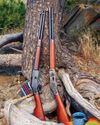
CIMARRON .32-20 Short Rifle & Carbine
In the heyday of Winchester Repeating Arms Company lever guns, it offered muskets, standard rifles, short rifles and saddle ring carbines.
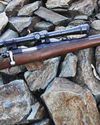
Remington's Model 722 and .222 Cartridge
It's easy enough to define what a varmint is, those pesky critters that tear up pastures, flower beds and all kinds of expensive crops people need for various reasons - most importantly, to make a living and/or something with which to feed themselves.

Coyote Bullets
What is Best for You?
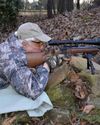
Remington's 5mm Rimfire Magnum
Shooting a Classic
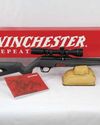
Winchester's New Wildcat
The Ultralight Rimfire Varmint Rifle

.223 Remington from .30-30 Winchester?
Multitasking for Varmints

LOADS FOR A .22 TCM
The .22 TCM first appeared commercially in 2012, chambered in a Rock Island Armory 1911-style handgun.
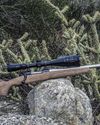
Everybody Loves Velocity
The 4,500-fps WSSM Project

A BOLT-ACTION FRANCHI 224 VALKYRIE
Testing New Loads
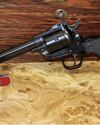
.22 Winchester Magnum Rimfire
Shooting Revolvers